
22 Apr How English-language learner education has changed since the 1950s

Ground Picture // Shutterstock
How English-language learner education has changed since the 1950s
Written by Andrea Vale
Learning a different language can be a point of pride, but there is a practical advantage too. Job postings seeking bilingual or trilingual applicants more than doubled from 2010 to 2015, according to a study performed by New American Economy. The most prestigious universities and colleges in the country prioritize students who have spent three or four years studying a foreign language. High school classrooms increasingly offer education in not only Spanish, French, and German but also Mandarin, Arabic, Italian, or Portuguese.
But foreign languages haven’t always been valued this way. In particular, there has historically been a marked difference between a native English speaker picking up a second language, and a nonnative English-speaking immigrant learning English upon their arrival to the United States.
There have been many waves of immigration to the U.S. throughout the 20th century, and each has brought shifting attitudes toward English-language learner education in U.S. schools. Bilingual programs have gone from disliked to valued, disliked to reconsidered, and finally valued again. In times when such programs have been out of favor, they were trumped by the ideology of “assimilation,” the idea that nonnative English-speaking immigrants must be immersed headfirst into not only English-language instruction but American culture and values as a whole.
Proponents of assimilation, therefore, might be surprised to learn that not only is America a multilingual country, it always has been. As long ago as 1664, at least 18 languages were spoken among new settlers to the U.S., not counting Native American languages. In 1839, some states began mandating that education be offered in languages other than just English.
Even today, the United States’ multilingual legacy continues; it is now the fourth-largest Spanish-speaking country in the world. In fact, English is not actually America’s official language; as recently as 2006, attempts to make it the federal language of the country failed.
HeyTutor compiled a list of changes in federal and state attitudes and policies toward English-language learners in schools from government records, historical archives, and research articles. Read on to learn how English-language learning in U.S. schools has evolved over time and what we might come to expect in the future.
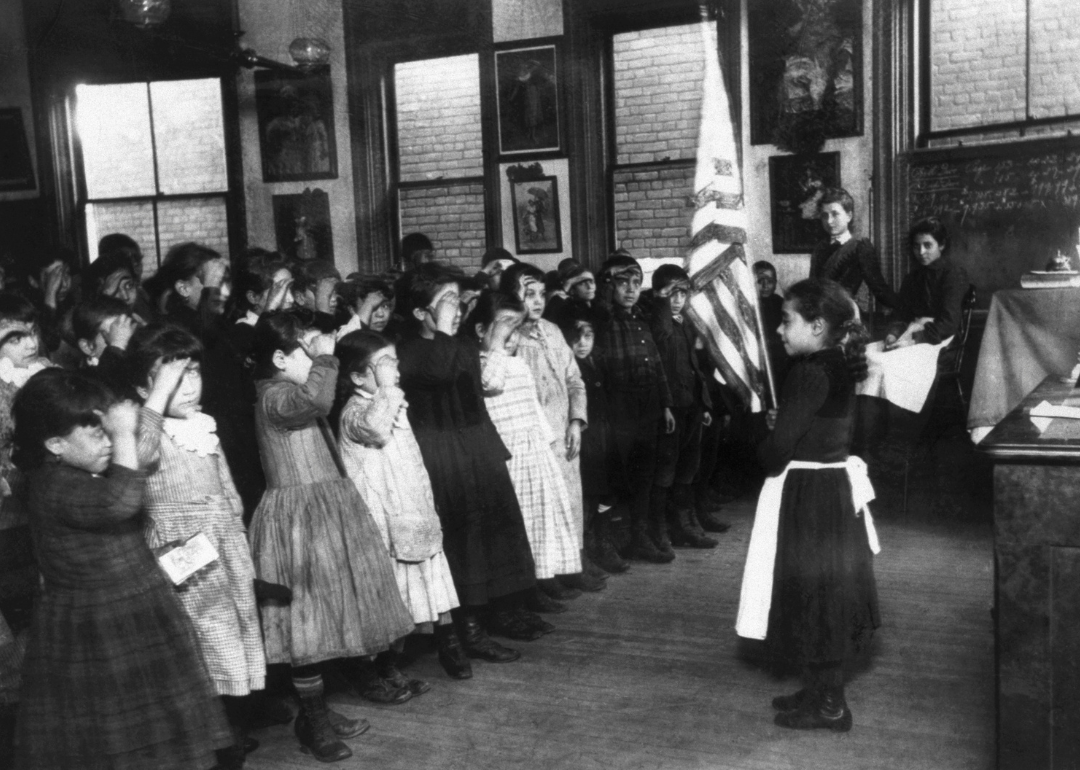
CORBIS/Corbis via Getty Images
Pre-1960s: The primary focus for non-English speakers is assimilation
The late 19th and early 20th centuries saw an influx of new immigrants to the U.S. Unlike previous groups from northern Europe, most new arrivals during this time did not speak English. This led to an “Americanization movement” focused on ironing out the cultural differences newcomers introduced and assimilating them into the “traditional” American identity, notably through language.
The 1917 Immigration Act excluded immigrants to the U.S. who did not speak English. Through 1922, over 30 states legally mandated that immigrants who did not speak or read English attend public classes. Non-English speaking children were thrown into exclusively English-speaking classrooms and put through testing in English without any accommodation for translation. Consequently, many immigrant children were classified as in need of special education or otherwise ranked far below their intelligence levels, due solely to their underdeveloped English skills.
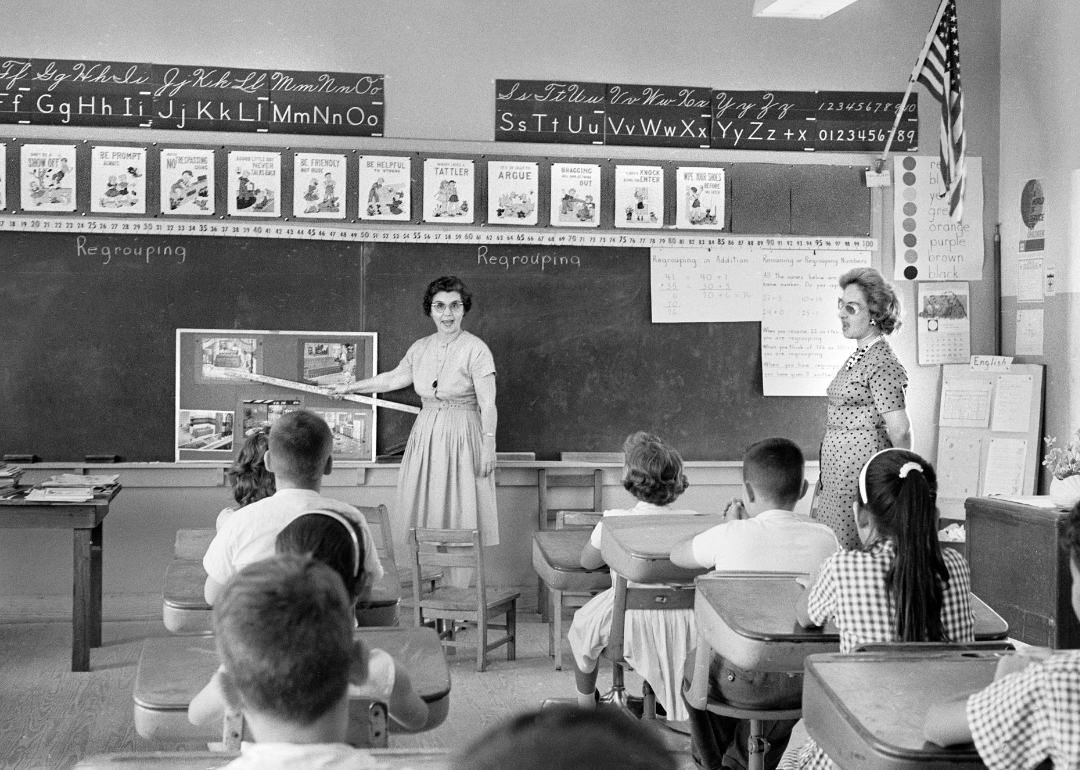
Circa Images/GHI/Universal History Archive/Universal Images Group via Getty Images
1960s: US government officially acknowledges non-English speaking students need specialized instruction
By the middle of the 20th century, it was clear that assimilation-based English instruction was stunting the educational growth of immigrant children. The 1968 Bilingual Education Act marked the first time that the U.S. government recognized the need for specialized instruction for non-English-speaking students. It came on the heels of Texas Sen. Ralph Yarborough’s introduction of a bill in 1967 geared at addressing the needs of the rising Mexican immigrant population in his state. Yarborough’s bill recommended funding to develop bilingual education programs and resources, an initiative the BEA copied.
Notably, however, neither Yarborough’s bill nor the BEA upheld bilingual education as enriching or of value in and of itself; instead, it was seen as a remedial solution to the perceived issue of immigrant students’ lack of English proficiency.
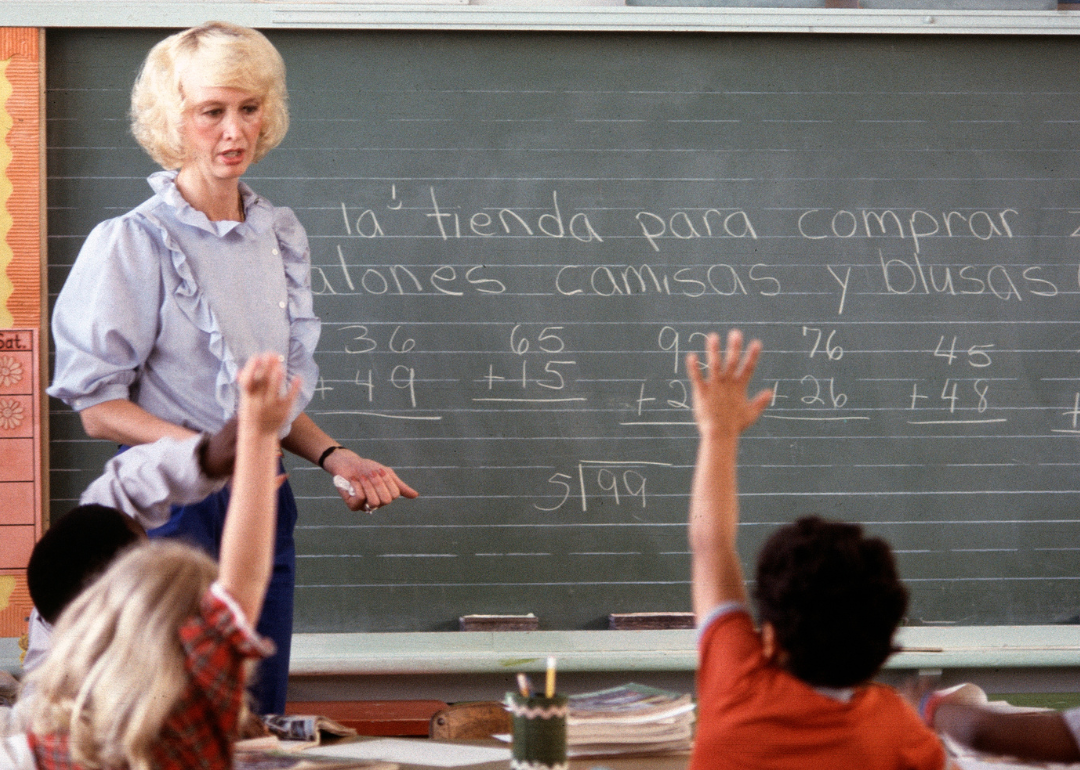
Bob Riha, Jr. // Getty Images
1970s: Increased recognition for the value of students’ home languages
In the decade following the Bilingual Education Act’s passing, the value of bilingual education became more evident, and new programs emerged centered on tapping into its potential. In 1974, the Supreme Court ruled in Lau v. Nichols that when the San Francisco Unified School District denied nearly 3,000 students of Chinese descent instruction in English, it violated their right to an equal education. Subsequently, bilingual education programs were developed by the Center for Applied Linguistics to ensure “understandable instruction to students of limited English ability” was accessible.
Additionally, the CAL published a series of studies examining the value of bilingual education from social science-, linguistic-, education-, and law-based perspectives. In 1974, the BEA was reauthorized to incorporate Lau v. Nichols’ view of bilingual education equating to equal educational opportunity for non-English-speaking children.
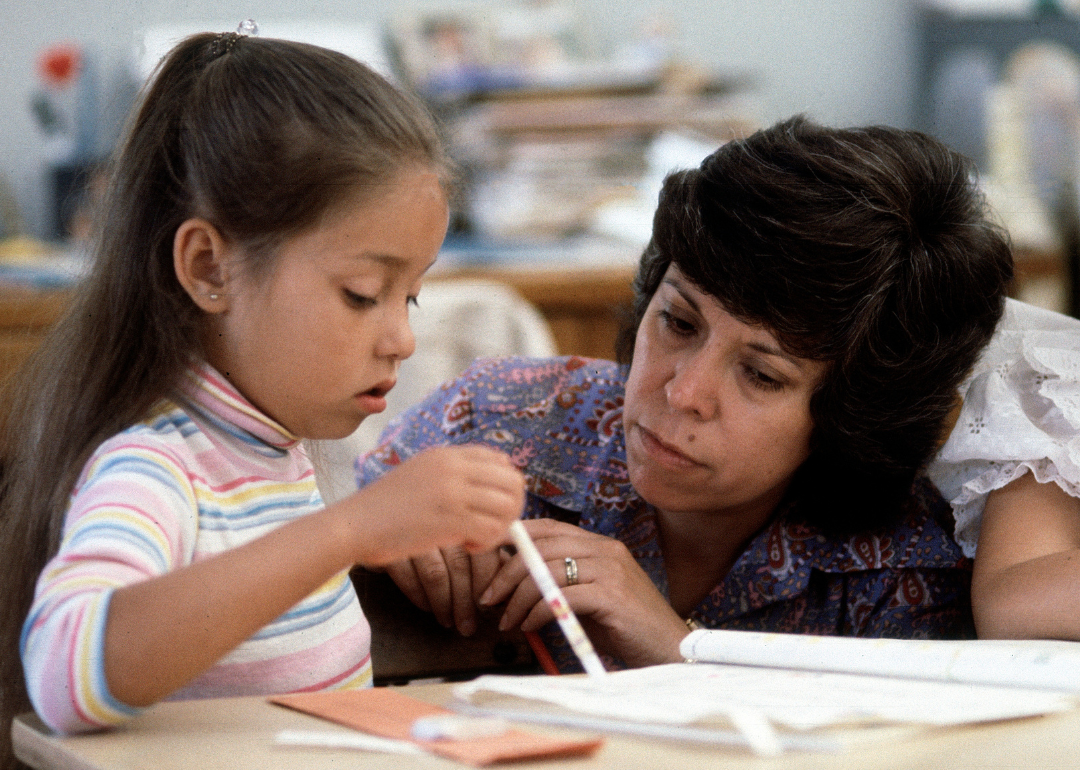
Bob Riha, Jr. // Getty Images
1980s: Funding is reduced for bilingual education in favor of English immersion programs
By the 1980s, however, the esteem that bilingual education had accumulated began to wane, largely due to a round of studies conducted by the federal government. In 1980, the Department of Education commissioned a literature review on the effectiveness of bilingual education over English-language immersion programs. The review concluded there was insufficient evidence proving the former was an effective approach.
The following year, largely due to backlash from educators, the Education Department blocked the implementation of Lau v. Nichols, which would have made bilingual education widely mandated in schools. Instead, it gave school districts more discretion in its approach. President Ronald Reagan scoffed at the idea of bilingual education, characterizing it as “absolutely wrong and against American concepts to have a bilingual-education program that is now openly, admittedly dedicated to preserving native language and never getting adequate in English.”
From 1980 to 1986, the Reagan administration scaled funding for bilingual programs back from $167 million to $133 million.

rawpixel.com // Shutterestock
1990s: Mandated English immersion programs saw a resurgence
By the turn of the decade, the pendulum swung even further back in favor of English immersion over bilingual education programs. In 1994, the Bilingual Education Act was once again reauthorized, but this time “introduced new grant categories, set up a preference to programs promoting bilingualism, and took into account indigenous languages.”
In 1998, Proposition 227 was passed in California, mandating that non-English speakers learn the language “overwhelmingly in English through immersion programs.” Under the act, bilingual instruction was allowed only under special circumstances and required a waiver stating that immersion courses were truly ineffective.

Brent Lewis // The Denver Post via Getty Images
2000s: No Child Left Behind made assimilation the official goal once again
The start of the 21st century echoed the beginning of the 20th in that assimilation was again held up as a valuable “fix” for immigrant youth. In 2001, Congress passed the No Child Left Behind Act, which eradicated the word “bilingual” from the Bilingual Education Act entirely. Under the NCLB, states are required to implement and report on standardized testing in K-12 classrooms and may face funding and resource penalties for consistently underperforming. This effectively enforced rapid assimilation for non-English-speaking students who would struggle to meet exclusively English testing requirements under bilingual instructions.
Although the NCLB does not mandate that bilingual education programs undergo similar standardized testing, English-language learners’ performance still affects a school’s overall assessment, thus turning “the question of whether or not a school receives a failing label into a question of how many ELLs attend.”

Derek Davis/Portland Press Herald // Getty Images
2010s: The benefits of bilingualism and biliteracy gain recognition through numerous studies
New interest in the possible benefits of speaking multiple languages was revived in the 2010s, proposing, for the first time, that bilingual programs could have inherent value on their own, rather than simply being “remedies” for the perceived “problem” of a lack of English proficiency among immigrant children. Eugene E. Garcia’s “Teaching and Learning in Two Languages” established that bilingual instruction not only improved English language acquisition for non-English speakers, it also raised their self-esteem.
The 2012 study “The Cognitive Benefits of Being Bilingual” by Viorica Marian and Anthony Shook provided a comprehensive breakdown of the benefits of bilingualism, noting that speaking multiple languages resulted in improved cognitive function, a better environmental adjustment in infants, and limited cognitive decline in the elderly. Further studies proved that bilingual individuals were more adept and flexible in social situations, able to better pick up on social cues, and switch between situations with ease.
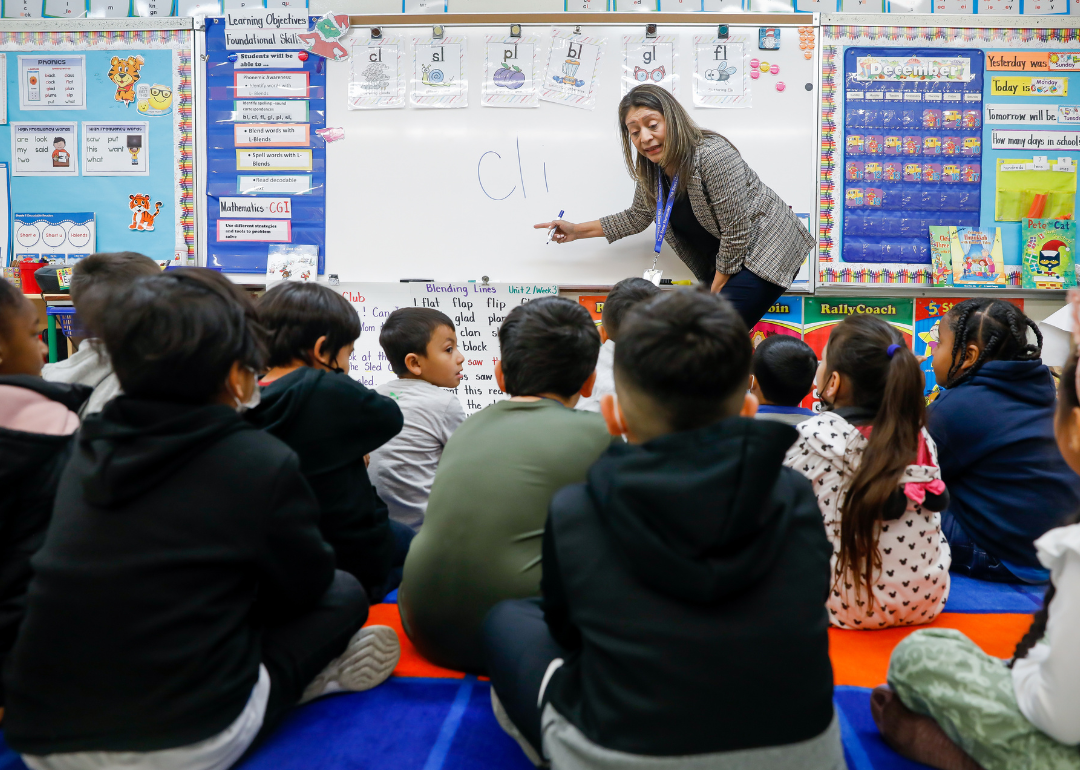
Christina House/Los Angeles Times via Getty Images
2020s: Dual-language classrooms are on the rise, with some states mandating bilingual education as needed
Today, bilingual education has reemerged, and not simply as a tool to achieve increased English proficiency. Instead, it is increasingly recognized as a valuable educational resource for both nonnative English speakers and native English speakers alike, with social and cognitive benefits as well as linguistic.
Arizona is currently the only state in the country left with a bilingual education ban still in place. As of April 2021, Connecticut, Illinois, New Jersey, New York, Texas, and Wisconsin require school districts to offer bilingual education if a certain threshold of non-English-speaking students have enrolled. In 41 other states and Washington D.C., districts are free to choose whichever language instruction they prefer, explicitly listing bilingual education as a permissible option.
Data reporting by Sam Larson. Story editing by Brian Budzynski. Copy editing by Paris Close. Photo selection by Elizabeth Ciano.
